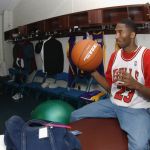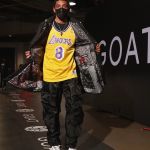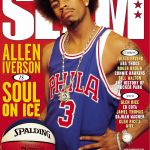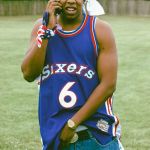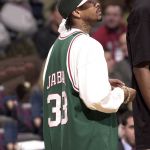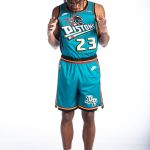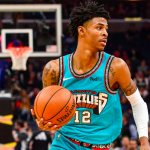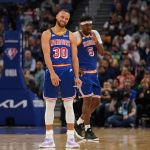
NBA obsession with throwback jerseys
Is the world's most futuristic league too stuck on its past?
October 21st, 2022
The NBA season has officially started and we can finally admire. on the court the new kits presented during the off-season. The big news is the return to the past: 10 teams have already presented their "Classic editions” - faithful reproductions of historical designs. Nike and the NBA have long planned this move, starting in 2019 with sporadic games played with throwback kits, until last year announcement, on the occasion of the 75th anniversary of the league, of the birth of the classic editions, which expanded the total number of kits from 4 to 5 for Warriors, Celtics and Knicks. The brand and the league slowly tested the ground to see how the public would react, as the market move could backfire in terms of image. After all, why should a sports league so attentive to current events and so projected towards the future "go back"?
To understand this decision, we need to take a leap into the past, as with most post-pandemic trends, of about twenty years. At the end of the 90s, the jersey was strongly positioned among the must-haves of the Hip-Hop style and in a couple of years it became a macro trend for menswear streetstyle. After golden age’s DJs and MCs started wearing them for any occasion, jerseys were everywhere and worn by everyone. At that point, the most devoted to style, who wanted to follow the trend but giving it a twist, start. eyeing the throwback jerseys - uniforms of now retired players, with a design that was no longer used on the court.
At the time they were produced exclusively by Mitchell & Ness and were cooler because they had a new but familiar style, were less accessible because they were produced in smaller quantities and therefore were more exclusive, with a higher price point than the Authentic - reproductions of those worn by active players. Wearing a jersey with a vintage design demonstrated refinement and taste in interpreting trends, while still allowing you to flaunt the capacity of your wallet. At this point a real challenge had begun in the Hip-Hop world on who had the most and who could find the most limited and sought after piece, with Fabolous aka “Throwback King” that will come to have a thousand throwbacks.
The turning point that made the trend explode came at the end of the millennium, thanks to the player who has most influenced the style in NBA history: Allen “The Answer” Iverson. In an iconic '99 SLAM Magazine cover he wore a retro Sixers jersey from the 1966-67 season to complete an outfit that celebrated the evolution of African American culture. AI also began to wear throwback jerseys when he was on the sidelines and during interviews, legitimizing wearing another team’s uniform. For players, wearing the uniform of a star of the past became a way to be cool and at the same time pay respect to those who made history before them. From this point on, the market expanded exponentially, thanks to the increasing influence of NBA rap stars and superstars on street style. Mitchell & Ness saw its revenue jump from $ 2.2 million in 1999 to $ 36 million in 2003, becoming the reference brand for retro jerseys.
Like any market that grows so much and so quickly, at the end of the 2000s the bubble burst, jerseys stopped being used as street clothing and returned to their origin as an item of merchandise worn exclusively by fans. In those years, however, basketball was expanding and the NBA grew its following year after year, reaching an estimated 2 billion fans worldwide. The jersey market therefore, despite having returned to being a niche market for enthusiasts, returned to be in constant growth. It started focusing on young and new fans who have sprung up in the last decade who, also thanks to the internet, have been able to become passionate to a past they had not seen and began to desire it. Mitchell & Ness created a cheaper line of throwback jerseys, but what really became were the "fake throwbacks": jerseys with vintage design but name and number of active players who, despite being obvious knock-offs, were bought and carried proudly. Every fan wants to be able to wear their favorite design and their favorite player from that team at the same time, no matter if it isn't historically accurate. At that point, Nike and the NBA had no choice but to open a new market, create the "Classic style" and re-propose those designs that made the history of each franchise, putting them on the players who are writing it now.








































.png)


.jpg)


















